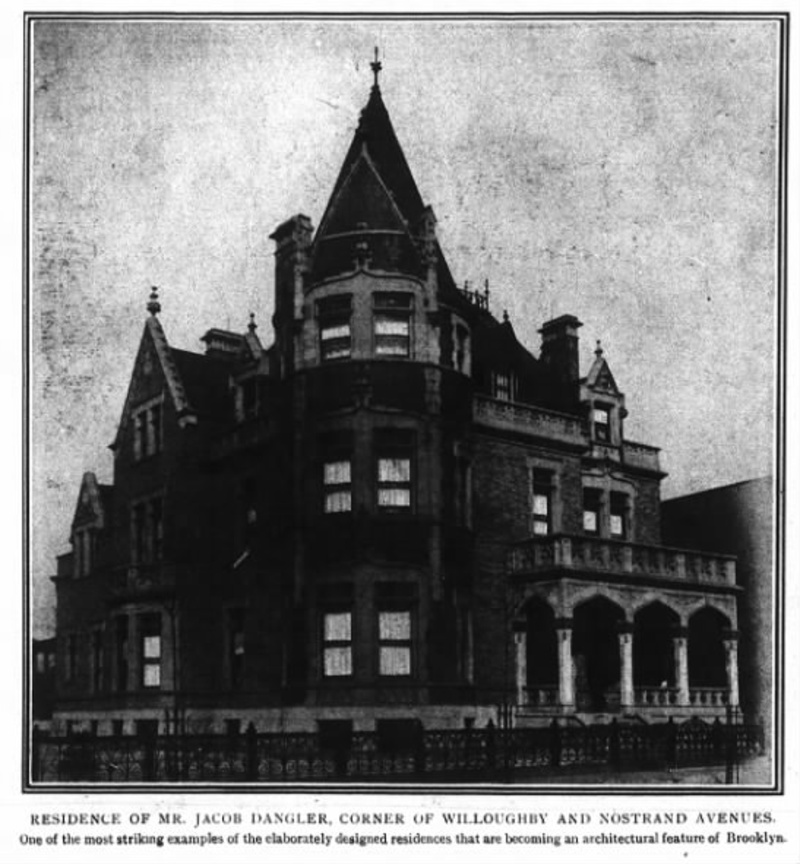4. Jacob Dangler House, Bedford Stuyvesant

Jacob Dangler was a German immigrant who arrived in New York in 1868. After working for other German grocers and learning about the business of provisions from them, he built his own company and fortune on processed meats. To show off his wealthy status, Dangler had a mansion built at the corner of Willoughby Avenue at Nostrand Avenue. It was designed by noted German American architect Thomas Engelhardt, who had previously designed Dangler’s factories and other buildings related to his business. According to Brownstoner, the mansion cost an estimated $50,000 when it was complete.
The French Gothic, brick and limestone mansion that Dangler built stood out among the more modest and middle-class rowhouses that surrounded it. An article in The Brooklyn Citizen from 1898 points out the many features of the home including a basement bowling alley, steam heat, and electric lighting. It goes on to describe the many rooms including a library, well-appointed bathrooms, a billiards room, a sitting room in the tower, a sewing room, a laundry, and a music room finished in mahogany with floors “varnished and without rugs in order to enhance the acoustic effects.”
The house was put up for sale in 1940. It was used by a variety of organizations including the Knights of Pythias and the Oriental Grand Chapter of the Eastern Star, a masonic organization. After much pushback from the local community (even actor Edward Norton) and a failure to gain landmark designation, the house at 441 Willoughby Ave was demolished in the summer of 2022.
The current owner has proposed a 44-unit 7-story high-rise apartment building for the site. A group called Justice for 441 Willoughby is fighting the future development of the site. Instead, the group is calling for the current owner to rebuild the mansion.





